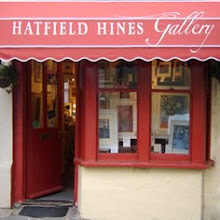 Last weekend St. Nicholas's Church Salthouse was crammed with 'krummhorns', 'nakers' and 'sorduns' in the name of charity, as mad-early-music-minstrel Robert Fitzgerald brought King Henry's Band to town.
Last weekend St. Nicholas's Church Salthouse was crammed with 'krummhorns', 'nakers' and 'sorduns' in the name of charity, as mad-early-music-minstrel Robert Fitzgerald brought King Henry's Band to town. As the concert began, it occurred to the uninitiated in the audience that Ye Olde Facebook could be called for, since the 'Band' consists of Fitzgerald plus four 'missing members' (variously dismissed for a string of historic misdemeanours involving excessive imbibing, unseemly lustiness and generally ill-considered merry making).
As the concert began, it occurred to the uninitiated in the audience that Ye Olde Facebook could be called for, since the 'Band' consists of Fitzgerald plus four 'missing members' (variously dismissed for a string of historic misdemeanours involving excessive imbibing, unseemly lustiness and generally ill-considered merry making).The ensemble sound is achieved by the layered use of pre-recorded backing tracks (in which Fitzgerald plays each individual instrument) augmented with his live performance of a 'missing' instrument.
 Between tunes, Kelling-dweller Fitzgerald waxed lyrical about the history, pedigree and construction of the many wind, string and percussion instruments presented including the bizarre 'gemshorn' crafted from an exotic-looking animal's horn.
Between tunes, Kelling-dweller Fitzgerald waxed lyrical about the history, pedigree and construction of the many wind, string and percussion instruments presented including the bizarre 'gemshorn' crafted from an exotic-looking animal's horn.The concert continued for a marathon three hours on a revolving come-and-go-as-you-please programme and raised over £400 towards church funds through contributions and CD sales.
Afterwards, Fitzgerald still had enough puff left - incredibly - to furnish groupies with tales of construction ups and downs.
We left with extensive programme notes and a CD, desperate for a peek into his garden shed!








